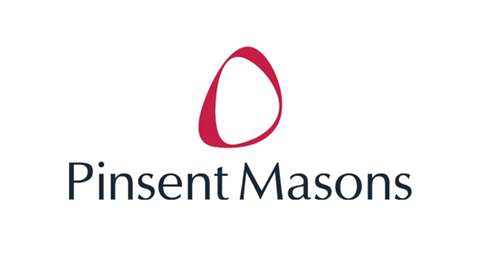Construction law: adjudicator bias
22 December 2022
King’s College London, in close collaboration with The Adjudication Society, recently published its report titled: 2022 Construction Adjudication in the United Kingdom: Tracing Trends and guiding reform.

A major talking point following the publication of the report is adjudicator bias.
The headline statistic is that 40% of questionnaire respondents have suspected bias towards one party during adjudication proceedings.
This is a worrying statistic. Lord Justice Coulson described this as ‘‘a truly startling message’’. However, digesting this statistic requires further analysis.
Perception
Whether or not bias has occurred is usually a matter of perception.
The most common reason given for suspected bias is the adjudicator’s relationship with the representatives or parties (61%). The second most common reason for suspecting bias is previous services for one party or previous involvement in the case (28%).
What information did the respondents have with regards to the relationship between parties? Was the information that aroused suspicion accurate? Were the suspicions validly held?
These are subjective questions that are difficult to assess and quantify.
Context
The findings do not analyse the frequency of the suspicion of bias.
The findings show that the questionnaire was largely answered by experienced adjudication practitioners. In this context, it is perhaps unsurprising that such a large percentage have ever suspected bias.
Reality
There are few reported cases dealing with arguments that an adjudicator’s decision should not be enforced by virtue of bias.
It has been argued that the adjudicator’s involvement in a previous adjudication constituted bias.
The Court of Appeal, in the case of AMEC v Whitefriars, overturned a decision of the TCC. An adjudicator was appointed and issued a decision that was held to be a nullity. This adjudicator was appointed a second time to decide the same issues. The adjudicator’s second decision was in the same terms as his first. The arguments advanced included: there was a real possibility of bias because, during a telephone conversation with the adjudicator, AMEC’s lawyer remarked that the reason the matter was coming back to him was his familiarity with the facts would save time and costs. The court held this remark did not amount to an invitation to reach the same decision as before, still less that there was a real possibility that the adjudicator would reach the same decision by reason thereof.
A further argument related to Whitefriars’s request in a letter from its lawyers, during the adjudication, that the adjudicator recuse himself on the basis that his ability “to act impartially and unbiased in this matter has been compromised” and amongst other things “because you may be liable for some of our clients’ costs”. It was argued that the threat of a claim against the adjudicator would lead the fair-minded and informed observer to conclude that there was a real possibility of bias.
The court held that none of the arguments advanced justified the conclusion that there was apparent bias. The court held the second adjudication decision was not tainted by apparent bias, therefore did not amount to a breach of natural justice.
It has been argued that contact with the adjudicator prior to the adjudication constituted bias.
In the case of Makers v Camden, one of the parties contacted a particular adjudicator in advance of an appointment and then subsequently contacted the nominating body to request that that adjudicator should be nominated. However, the earlier contact with the adjudicator was not disclosed. It was argued that the adjudicator had not been validly appointed. It was submitted that the initial contact meant that the decision was tainted by apparent bias. The court rejected the argument on the basis that contact between the solicitor and the adjudicator prior to the appointment was limited to a discussion of his availability and his legal qualifications.
It has been argued that the connection between an adjudicator and a party’s lawyers constituted bias.
In Fileturn v Royal Garden Hotel, the adjudicator had previously worked for the claims consultancy firm representing one of the parties. The claims consultancy firm had regularly requested the appointment of its ex-colleague, although appointments from his old business only amounted to 5%–10% of the adjudications that he was involved in. The allegation of breach of natural justice was rejected on the basis that familiarity between a judge and a party’s legal representative did not amount to apparent bias.
Arbitrator bias
In Cofely v Bingham, the arbitrator was removed on the grounds of apparent bias. Whilst this case relates to arbitration, it does have relevance to the principle of natural justice in adjudication proceedings. It shows that regular instruction of a particular adjudicator by a particular firm or claims consultant could potentially give rise to apparent bias.
Conclusion
The headline statistic in relation to suspicion of bias is undoubtedly concerning. However, the limited number of reported cases dealing with the issue suggests that adjudicator bias is not an obstacle to natural justice.
About Pinsent Masons
Chris Reid is a solicitor with the multinational law firm Pinsent Masons LLP, which specialises in the construction, energy, financial services, infrastructure, manufacturing, real estate and technology sectors.
The company is top-ranked for construction law by all legal directories in the UK. It has over 400 partners, a total legal team of around 1,800 people and more than 3,000 staff globally.

Further information on any legal or contractual issue can be obtained by calling +44 (0)20 7418 7000.




